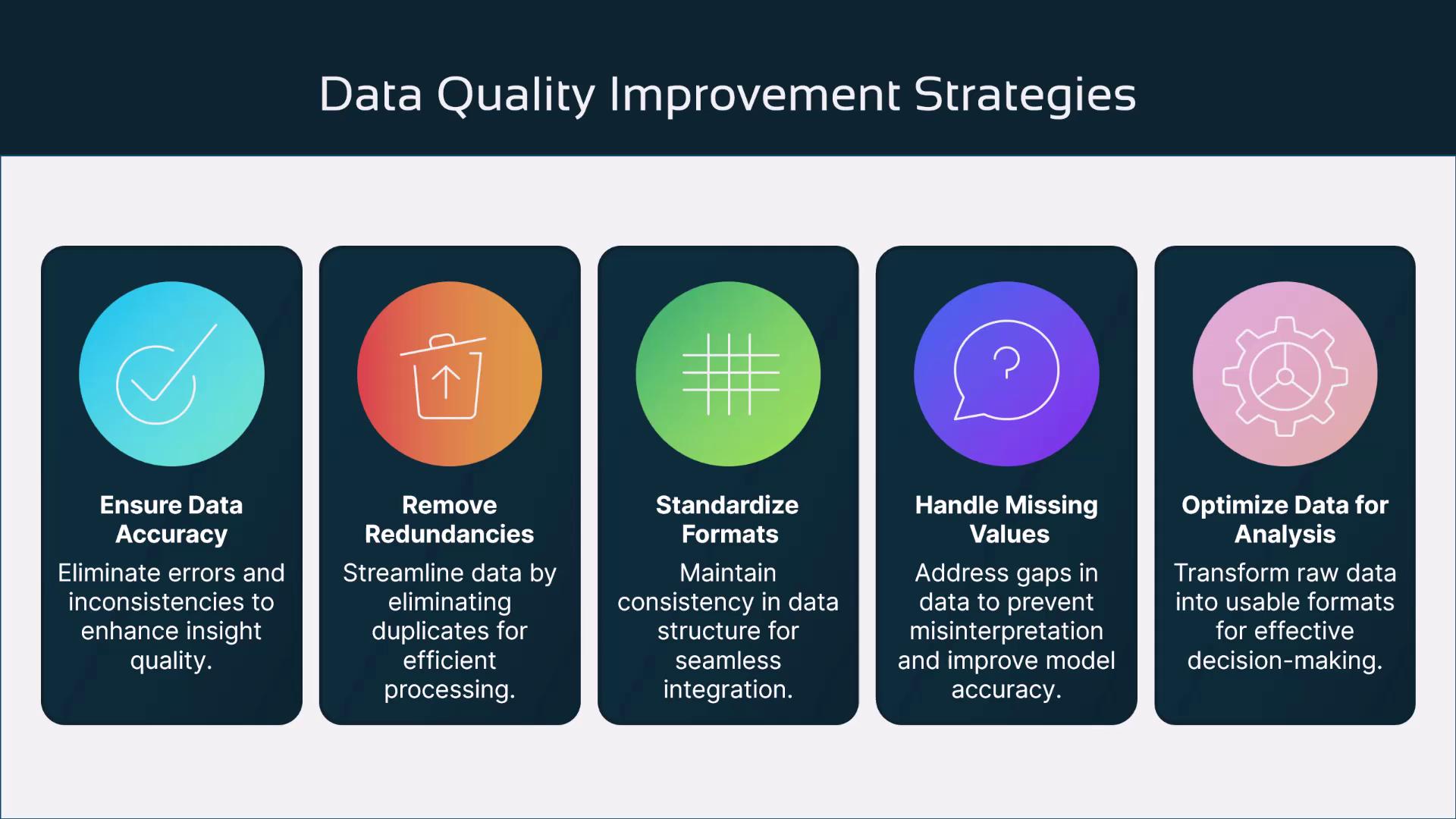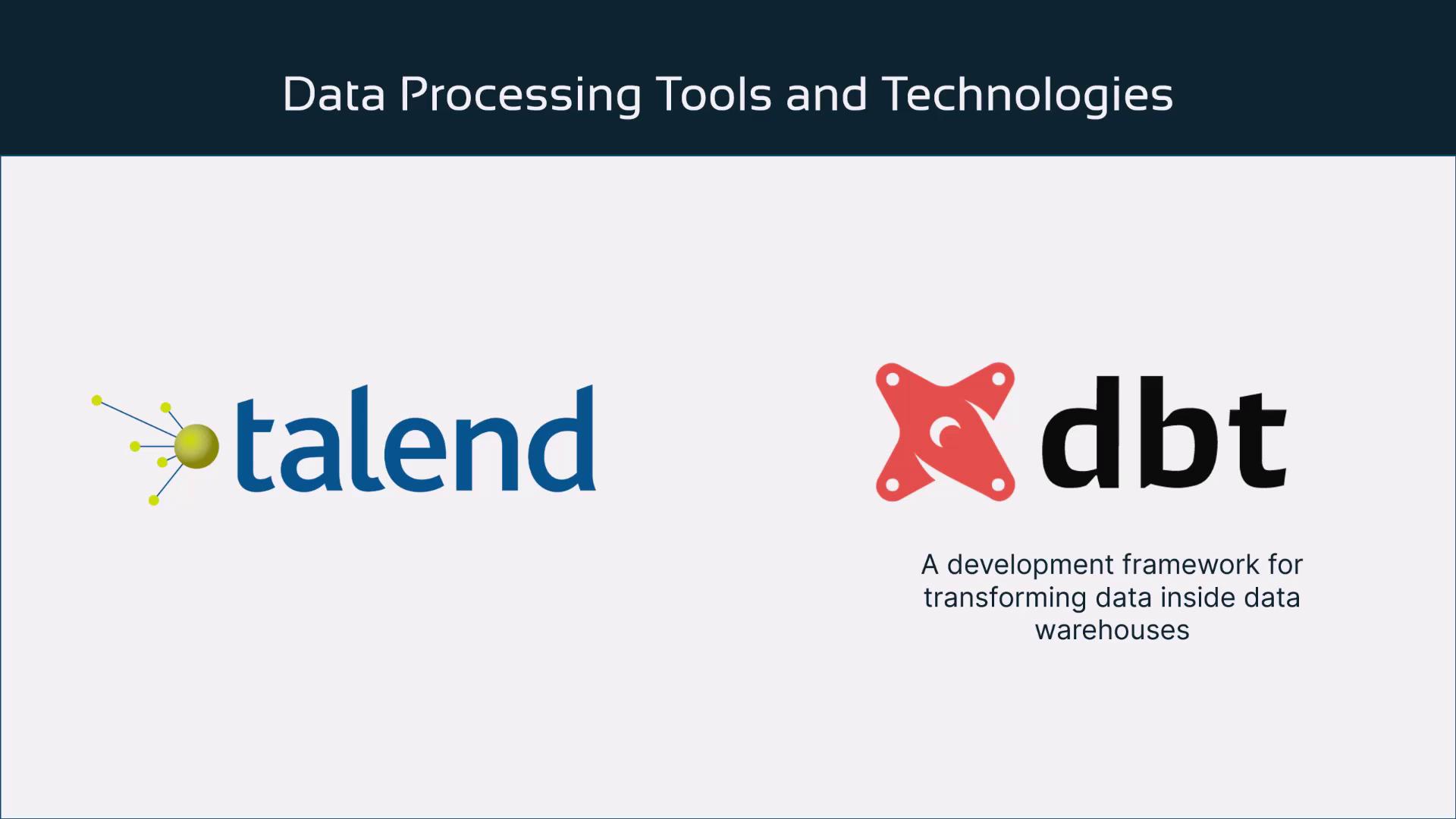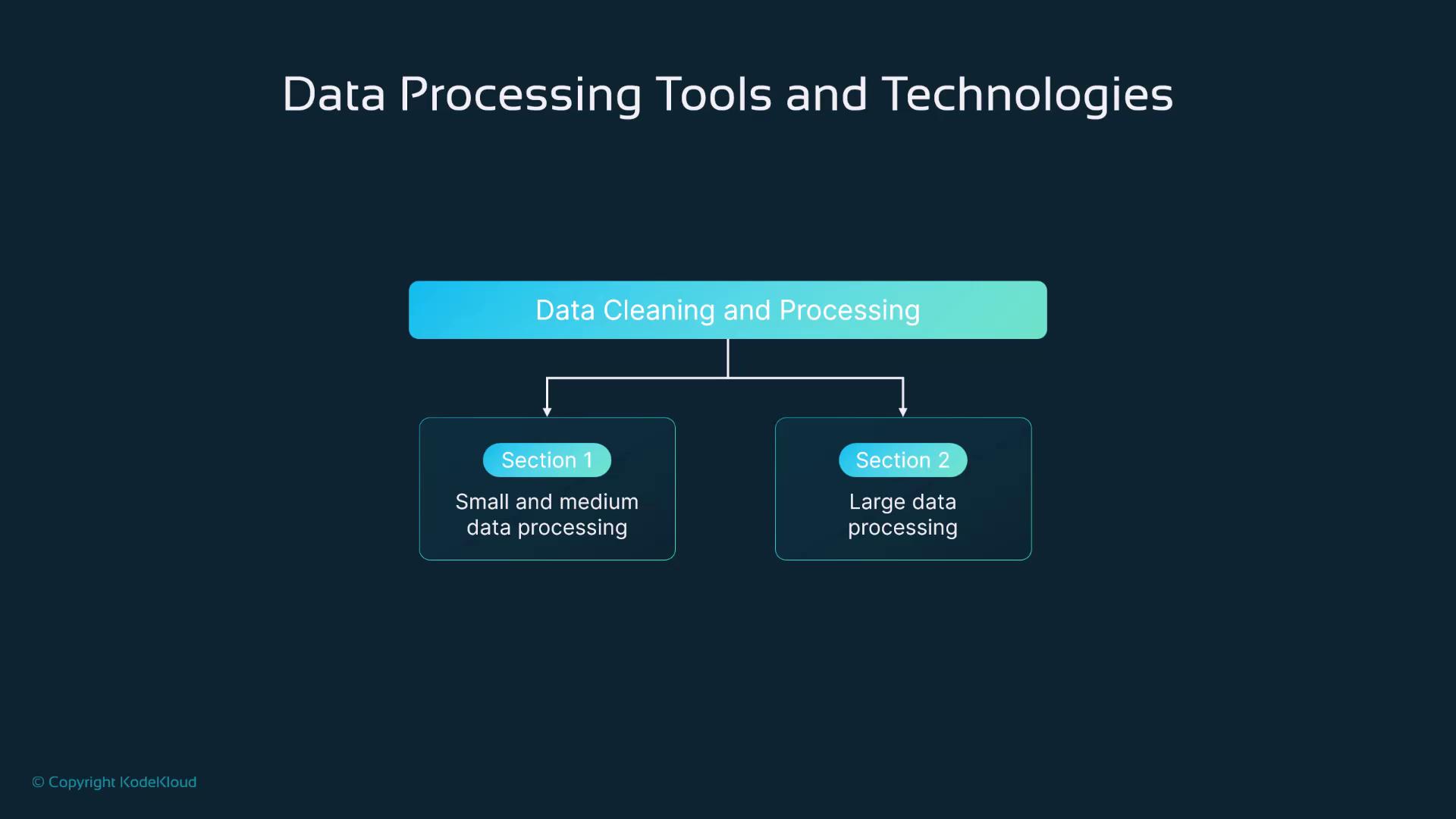Fundamentals of MLOps
Data Collection and Preparation
Data Cleaning and Data Transformation
Welcome to this comprehensive lesson on data cleaning and transformation, a foundational process for improving the quality and consistency of your data for analysis and machine learning.
When diverse data types are extracted, they are typically stored in a Data Lake. This raw data arrives in various formats such as CSV files, documents, JSON files, images, Parquet files, and more. However, to ensure seamless analysis and integration, it is crucial to transform this heterogeneous data into a single, consistent format—most commonly Parquet.
Before beginning any transformation, it is essential to assess the quality of the extracted data. Ask yourself: Does the data meet the required standards? Are all the necessary attributes present to build an effective machine learning model? This evaluation is a vital step that can take place either before or during the transformation process.
Essential Strategies for Data Quality Improvement
Enhancing the quality of your data involves several key strategies:
Ensuring Data Accuracy
Data accuracy forms the foundation for reliable analysis. Errors and inconsistencies can lead to misleading insights. For example, correcting delivery address errors in a logistics company not only improves delivery times but also boosts customer satisfaction.Removing Redundancies
Eliminating duplicate records is critical. Consider a customer database where the same client appears repeatedly; such redundancies can result in inefficiencies and confusion in marketing and billing operations.Standardizing Formats
Consistency in data formats is key to seamless integration. For instance, one system might record dates in MM/DD/YYYY format while another uses YY/MM/DD. Standardizing these formats optimizes workflows and prevents integration issues.Handling Missing Values
Incomplete data can severely impact model performance and result in inaccurate predictions. Addressing missing values—like absent customer age information in retail—improves the accuracy of personalized recommendations.Optimizing Data for Analysis
Transforming raw data into structured formats simplifies processing and accelerates analysis. For example, social media platforms may convert raw posts into sentiment scores to quickly identify emerging trends.

Note
Reviewing and applying these data quality strategies ensures that subsequent transformation processes yield reliable and actionable insights.
Data Processing Tools and Technologies
Selecting the appropriate tools is essential for enhancing data quality and managing transformations effectively. Below are some widely used tools and technologies:
Pandas
A versatile Python library ideal for small- to medium-sized data tasks. For example, startups frequently use Pandas to manipulate sales data and generate interactive dashboards.Apache Spark
Engineered for industrial-scale data processing, Apache Spark supports real-time analysis of terabytes of data. Companies like Uber leverage Spark to process vast amounts of data across global operations.AWS Glue
A serverless ETL (Extract, Transform, Load) tool that simplifies data preparation. A gaming company might use AWS Glue to convert raw player activity data into structured tables, which then guide player retention strategies.Talend
Known for its intuitive drag-and-drop interface, Talend simplifies ETL processes, making it ideal for teams that prefer visual data integration. In healthcare, Talend can integrate patient records from varied sources into a unified format.DBT (Data Build Tool)
DBT focuses on transforming data within the data warehouse, enabling data analysts to perform complex transformations similar to software engineering practices. E-commerce platforms, for example, might use DBT to transform raw clickstream data into actionable customer segments.

Table: Overview of Data Processing Tools
| Tool | Use Case | Typical Example |
|---|---|---|
| Pandas | Small to medium data processing | Manipulating sales data for dashboard generation |
| Apache Spark | Large-scale, real-time data analytics | Processing global data streams for transportation analytics |
| AWS Glue | Serverless ETL operations | Transforming raw gaming data into structured reports |
| Talend | Visual ETL processes | Integrating patient records from multiple healthcare systems |
| DBT | Data transformation within warehouses | Converting raw clickstream data into actionable customer segments |
Warning
Ensure that your chosen data processing tool aligns with your project’s scale and performance requirements to avoid potential bottlenecks or inefficiencies.
A Real-World Application
Integrating the right set of tools can address different scales of data processing:
Small to Medium Data Processing:
Python, with libraries like Pandas, efficiently handles tasks that do not require massive scalability.Large Data Processing:
Apache Spark shines in complex, large-scale operations, ensuring optimal performance across extensive datasets.
In the upcoming lesson, we will dive deeper into small and medium data processing and transformation using Python, providing practical examples and use cases.

Thank you for joining this lesson. We look forward to exploring more detailed examples and advanced techniques in our next session.
Watch Video
Watch video content